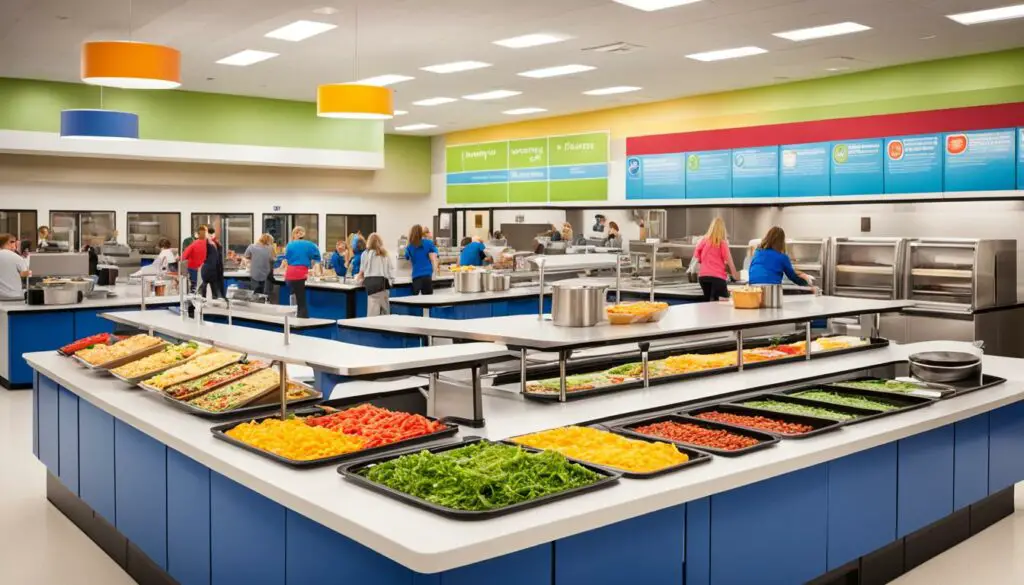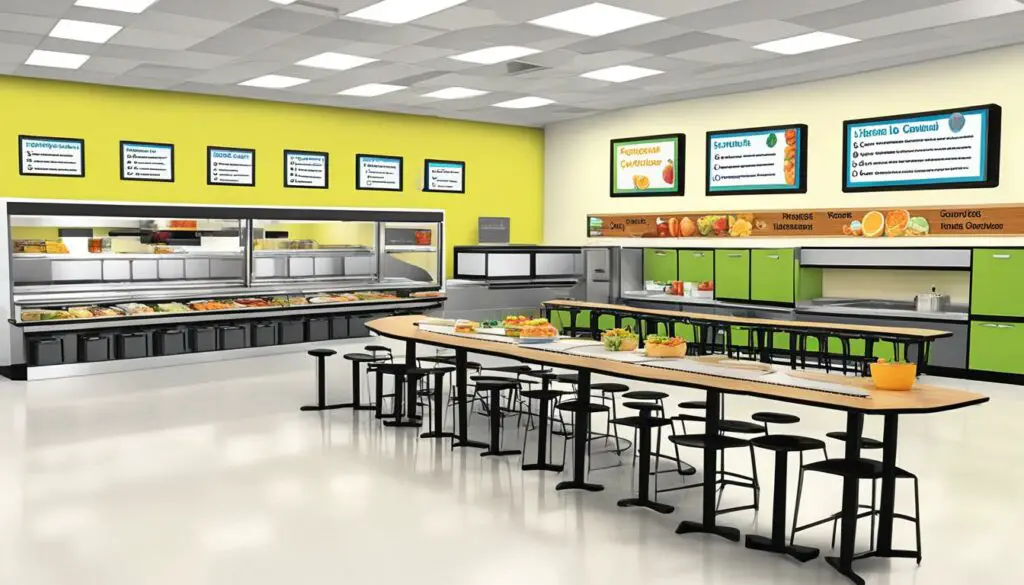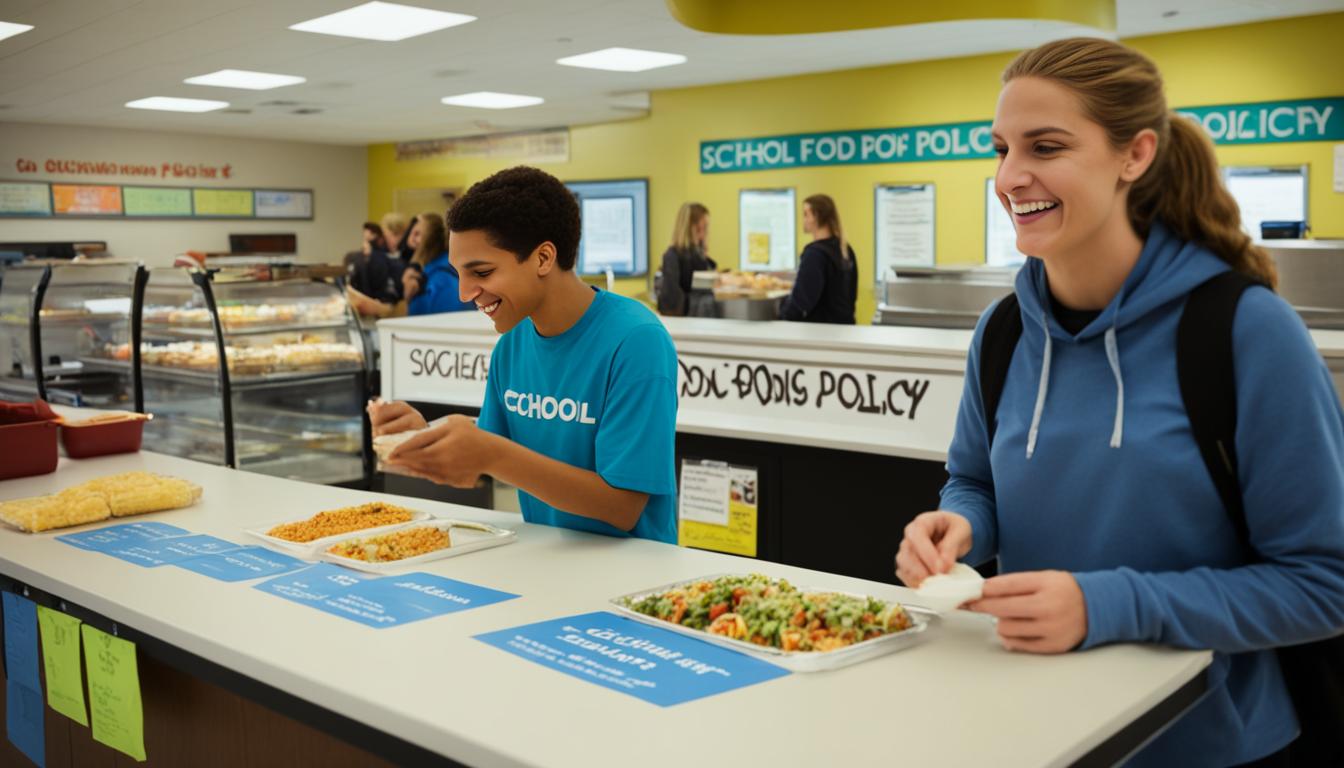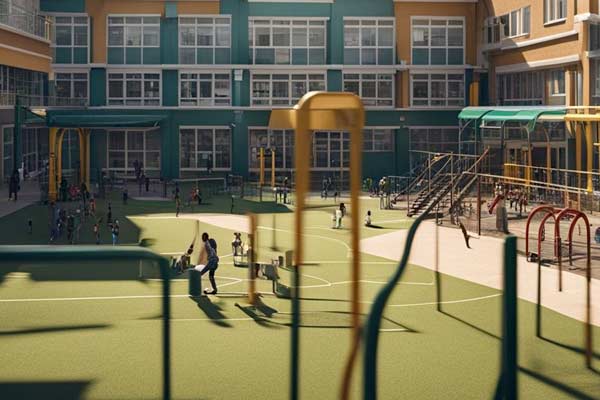Should Students Be Allowed to Order Food at School?
The debate surrounding whether students should be allowed to order food at school has raised questions about school food policies and their impact on student nutrition.
Advocates argue for the convenience and potential benefits of allowing food ordering, while others express concerns about the health implications and disruption to the educational environment. Let’s examine the data to understand both perspectives.
Benefits of Allowing Students to Order Food at School
Allowing students to order food at school offers numerous benefits, from providing healthy food options to enhancing the overall dining experience. A survey conducted among California middle and high school students revealed enlightening insights into the impact of food ordering on student nutrition and satisfaction.
More than half of the students reported eating school meals but often skipped them due to dissatisfaction with the food.
However, the survey also revealed that students would be more inclined to eat school meals more often if they tasted better, offered more food choices, or had shorter lines.
This presents an opportunity for schools to address these concerns through a food ordering system.
Healthier Food Options: Allowing students to order food at school enables schools to offer a wider range of nutritious options. By partnering with local vendors or developing healthy meal plans, students can access balanced and wholesome meals catering to their dietary preferences and restrictions.
Enhancing the School Dining Experience: Food ordering at school can transform the cafeteria into a dynamic and enjoyable space. Students can enjoy a variety of cuisines, flavors, and textures that appeal to their taste buds. This fosters a positive relationship with food and encourages students to make healthier choices and develop a more diverse palate.
Time Constraints: With busy class schedules, students often face time constraints during lunch. Allowing food ordering provides an efficient solution by minimizing wait times and giving students more control over when and what they eat. This ensures that they have adequate time to enjoy their meals and refuel for the afternoon lessons.
Student Empowerment: Allowing students to order food at school empowers them to make independent and responsible meal decisions. It encourages them to become proactive participants in their nutrition and fosters the development of healthy eating habits that can extend beyond the school environment.
| Benefits | Description |
|---|---|
| Healthier Food Options | Providing a wider range of nutritious meals and accommodating dietary preferences and restrictions. |
| Enhancing the School Dining Experience | Cultivating a positive relationship with food, encouraging healthier choices, and expanding students’ culinary experiences. |
| Time Constraints | Minimizing wait times and allowing students more control over their eating schedules. |
| Student Empowerment | Fostering independence, responsibility, and the development of healthy eating habits. |
Potential Drawbacks of Ordering Food at School
While there are potential benefits to allowing students to order food at school, there are concerns regarding student nutrition and food choices. Fast or restaurant deliveries may not always provide the same nutritional value as school-provided meals.
🌟 Hey Students! 🚀 Ready for the ultimate experience? Join us on Studentsinside.com's Facebook, YouTube, WhatsApp, and LinkedIn. Click now for tips, fun, and success vibes! 🌈✨ #StudentLife #JoinUs
Additionally, there is a concern that students may opt for less healthy options instead of balanced meals. It is essential to consider these drawbacks and find ways to ensure that food ordering options promote healthy eating habits.
The Nutritional Value Dilemma
One potential drawback of ordering food at school is the inconsistent nutritional value of fast food or restaurant meals. School-provided meals often follow nutritional guidelines and regulations, ensuring students receive a balanced and nutritious diet.
However, external food deliveries may not adhere to the same standards, leading to potential gaps in essential nutrients.
Research has shown that school-provided meals are higher in key nutrients such as vitamins, minerals, and fiber. At the same time, fast food options are often higher in unhealthy fats, sodium, and added sugars. This difference in nutritional composition can have long-term implications for student health and well-being.
Risk of Unhealthy Food Choices
Another concern about allowing food ordering at school is the potential for students to make unhealthy food choices. With a wide range of options available from fast food chains, restaurants, and delivery platforms, students may be tempted to choose less nutritious meals over balanced alternatives.
Studies have indicated that students are more likely to opt for calorie-dense, low-nutrient foods like pizza, burgers, and fried snacks when given the choice. These choices not only contribute to unhealthy eating habits but also have a detrimental impact on student nutrition and overall well-being.
Promoting Healthy Eating Habits
To address these potential drawbacks, it is essential to implement strategies that promote healthy eating habits among students. This can include offering healthier options from established local restaurants or ensuring that external food deliveries meet specific nutritional standards.
One approach is collaborating with local restaurants and establishing partnerships to provide healthier menu options for school-aged children.
Additionally, implementing guidelines for external food deliveries to meet specific nutritional criteria can help mitigate the risks associated with unhealthy food choices. This can include guidelines on maximum calorie and sodium intake and recommendations for balanced meal options.

Student Perspectives on School Meals
Students’ satisfaction with school meals is crucial in shaping school food policies. A survey of California students to understand their perspectives revealed valuable insights into their preferences and experiences in school cafeterias.
Taste and Food Choices
One significant factor influencing student satisfaction is the taste of school meals. The survey found that students desired better meals, indicating room for improvement in flavor profiles and cooking methods. Enhancing the taste of school meals can encourage more students to choose them, promoting healthy eating habits.
Additionally, the variety of food choices available to students is another aspect that directly impacts their satisfaction. Students preferred more diverse options, which can help cater to different tastes and dietary requirements.
Wait Times and Accessibility
Wait times in school cafeterias can significantly affect students’ dining experiences. Students expressed a desire for shorter lines, as long wait times cause frustration and limit the time available to enjoy their meals.
Schools should explore strategies to streamline the serving process and reduce waiting times, such as implementing efficient queuing systems or offering pre-ordering options.
Furthermore, accessibility to meals throughout the day is an essential consideration. Students highlighted feelings of fatigue and hunger in the afternoons, which could potentially impact their ability to focus and learn.
Providing access to nutritious meals during scheduled breaks can help address these issues and contribute to overall student well-being.

| Student Preferences | Percentage of Students |
|---|---|
| Desire for better-tasting meals | 76% |
| Preference for more food variety | 82% |
| Request for shorter wait times | 68% |
The table above highlights the key preferences expressed by students regarding school meals. These insights demonstrate the need for schools to prioritize taste, variety, and efficient service to enhance student satisfaction and promote healthier eating habits.
Strategies to Address Time Constraints and Improve School Meals
Adding or Staggering Lunch Periods
One strategy to address time constraints is to add or stagger lunch periods. This allows schools to accommodate more students at a given time, reducing overcrowding and long wait times.
Allowing Adequate Time for Students to Eat
Ensuring students have sufficient eating time is crucial in promoting healthy eating habits. Schools can allocate a dedicated time slot for lunch, allowing students to finish their meals without rushing. This approach can improve digestion, increase satisfaction, and improve overall well-being.
Improving the Cafeteria Environment
The cafeteria environment plays a significant role in shaping students’ dining experience. Schools can focus on enhancing the cafeteria layout, aesthetics, and functionality.
Some potential improvements include creating comfortable seating areas, implementing attractive and intuitive serving stations, and incorporating natural lighting and greenery to create a pleasant and welcoming atmosphere.

| Benefits | Drawbacks |
|---|---|
| Improved student satisfaction | Potential increase in costs |
| Promotion of healthy eating habits | Logistical challenges |
| Positive impact on student well-being | Resistance to change |
The Role of School Wellness Policies
Local school wellness policies play a vital role in shaping school food policies and providing guidelines for the timing and duration of school meals.
These policies aim to promote students’ health and well-being by ensuring access to nutritious meals and creating a supportive environment for healthy eating.
One key area that school wellness policies address is the timing and duration of school meals. These guidelines ensure students have enough time to eat without feeling rushed or pressured.
In addition to timing, school wellness policies also focus on the availability of healthy food options. These policies advocate for including fresh fruits and vegetables, whole grains, and lean proteins in school meals while limiting the presence of sugary drinks, high-fat foods, and snacks with little nutritional value.
Evidence-based research and student feedback are crucial in strengthening local school wellness policies. Schools can use student preferences and nutritional needs data to inform their policy decisions and improve their meal programs.

| Benefits of School Wellness Policies | Potential Challenges |
|---|---|
|
|
Balancing Nutritional Needs and Safety Concerns
When addressing students’ nutritional needs, schools must also consider the safety concerns associated with food deliveries. While allowing food from external sources may seem convenient, it can expose students to unknown ingredients and potential allergens.
As a result, striking a balance between meeting nutritional needs and ensuring student safety becomes paramount.
Schools can navigate this challenge by implementing measures to address safety concerns. For instance, banning food deliveries altogether can eliminate potential risks associated with external orders. This approach minimizes the risk of allergens and other unknown substances entering the school environment.
Implementing strict safety protocols becomes crucial if schools decide to allow food deliveries. Schools can collaborate with trusted food delivery services, prioritizing food safety and adhering to strict hygiene practices. Establishing clear guidelines and requirements to ensure that the delivered food is not only nutritious but also meets all safety standards is essential.
FAQ
Q: Should students be allowed to order food at school?
A: Allowing students to order food at school is a topic of debate. Arguments exist for the convenience and potential benefits of providing students with food ordering options. However, concerns about student nutrition and food choices also need to be considered.
Q: What are the benefits of allowing students to order food at school?
A: Allowing students to order food at school can provide healthier food options and enhance their overall dining experience. It can also address issues such as time constraints and give students more control over their food choices.
Q: What are the potential drawbacks of ordering food at school?
A: One potential drawback is that fast or restaurant deliveries may not always provide the same nutritional value as school-provided meals. There is also a concern that students may opt for less healthy options instead of balanced meals. Ensuring that food ordering options promote healthy eating habits is essential.
Q: What do students think about school meals?
A: According to a survey among California students, student satisfaction with school meals is influenced by taste, food choices, and wait times. Students desired meals that tasted better, offered more variety, and had shorter lines. Understanding student perspectives is crucial in shaping effective school food policies.
Q: How can schools address time constraints and improve school meals?
A: Schools can consider strategies such as adding or staggering lunch periods, allowing adequate time for students to eat, and improving the cafeteria environment. Longer lunch periods have been found to reduce student rush and increase satisfaction with the dining experience.
Q: What is the role of school wellness policies?
A: Local school wellness policies play a vital role in shaping school food policies and providing guidelines for the timing and duration of school meals. These policies can address issues such as the availability of healthy options and the overall nutritional standards of school meals.
Q: How can schools balance nutritional needs and safety concerns?
A: While meeting students’ nutritional needs is crucial, safety concerns are also associated with school food deliveries. Allowing food from external sources may expose students to unknown ingredients and potential allergens. Schools can implement measures such as banning food deliveries or establishing strict safety protocols to address these concerns.








